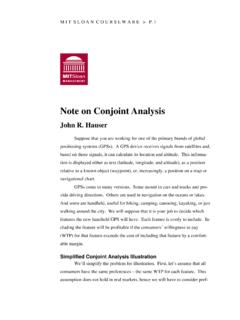Search results with tag "Conjoint analysis"
MULTIVARIATE DATA ANALYSIS - Semantic Scholar
pdfs.semanticscholar.orgWhat Is Conjoint Analysis? 266 Hypothetical Example of Conjoint Analysis 267 Specifying Utility, Factors, Levels, and Profiles 267 Gathering Preferences from Respondents 268 Estimating Part-Worths 269 Determining Attribute Importance 270 Assessing Predictive Accuracy 270 The Managerial Uses of Conjoint Analysis 271 Comparing Conjoint Analysis ...
Note on Conjoint Analysis - mit.edu
www.mit.eduM I T S L O A N C O U R S E W A R E > P. 1 Note on Conjoint Analysis John R. Hauser Suppose that you are working for one of the primary brands of global
Student Recruitment Strategy - University of Edinburgh
www.ed.ac.uk3 Conjoint analysis is a market research technique that identifies the relative importance consumers attach to different product attributes or features and the impact this has on the choices they make. Market intelligence and insight Recruitment communications Portfolio development, innovation and review
Discrete Choice Experiment (DCE): a methodology for ...
www.who.intDiscrete Choice Experiment • The Stated Preference methodologies: a large family (conjoint analysis, contingent valuation…) • An increasingly popular methodology for
Conjoint analysis - Pennsylvania State University
www.personal.psu.eduConjoint analysis Basic idea of conjoint analysis Overall utility for a product can be decomposed into the utilities (called part-worths) associated with the levels of the individual attributes of the product; The relative importance of a given attribute is given by the ratio of the part-worth range for that




